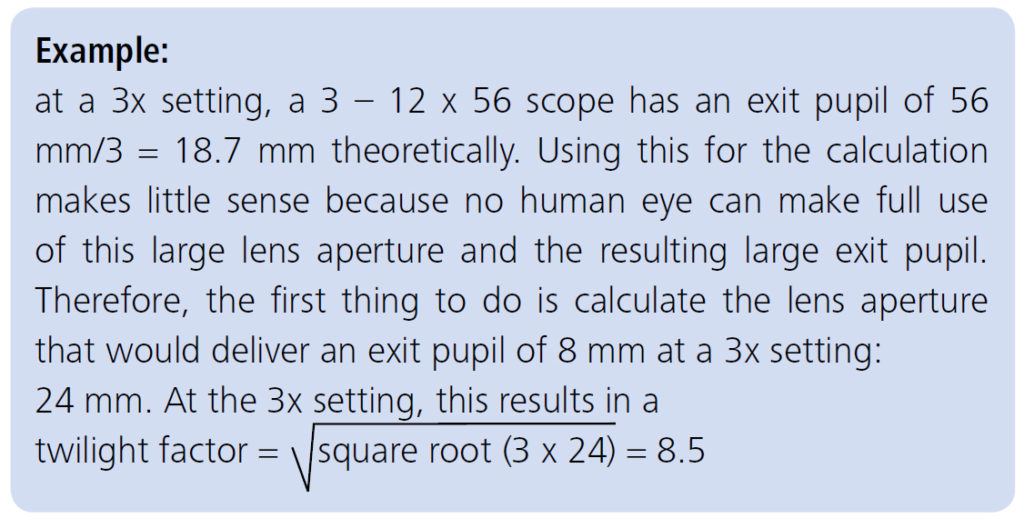What does it mean?
The larger the entrance aperture the more light that enters the binoculars. And the higher the magnification at the same image brightness the more details that can be observed. The twilight factor is often referred to as a comparative value for the suitability of binoculars when less light is available.
Definition
It is calculated by multiplying the lens diameter by the magnification and obtaining the square root from the result:

Criticism on the twilight factor
However, this twilight factor is a mere mathematical parameter. The really important performance data of binoculars (image quality, contrast, transmission, color rendition etc.) are not taken into consideration. Every pair of 8 x 42 binoculars, for example, has the same twilight factor – 18.2 – regardless of how good or bad it is in practice, regardless of the brand or price! The twilight factor can also be completely misleading as shown in the following example: two binoculars, 8 x 56 and 56 x 8 (such a model does not exist but would be feasible theoretically), have the identical twilight factor of 21.2! While an 8 x 56 model is ideal during twilight, a 56 x 8 pair would e totally unusable – even during the day.
Practical tip: Exit pupil
The twilight factor alone does not permit any kind of real statement. A correspondingly large exit pupil is always decisive and important for twilight use. Ideally, it should be at least as large as the pupil of the user. Anything with an exit pupil smaller than 4 mm is, therefore, unsuitable in the waning light right from the start – even if the twilight factor is high.
Twilight factor for riflescopes
Calculating the twilight factor for riflescopes is slightly different from the above-described definition. Here, only a lens aperture that provides an exit pupil no larger than 8 mm is taken into consideration. Even a very young hunter cannot use more light.
